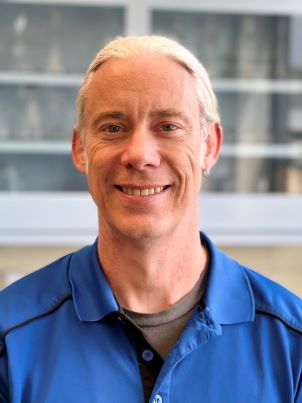
Bruce Medhurst, Mammoth Community Wastewater District
The weekend surge in skiers, hikers, and visitors at Mammoth Lakes present a challenge that Bruce Medhurst enjoys.
The population goes from 8,000 to 35,000, requiring the crew at the Mammoth Community Water District (MCWD) wastewater treatment plant to adjust and optimize treatment as they produce tertiary treated water for reclaim.
As laboratory supervisor for both wastewater and drinking water, Bruce likes being part of the team, troubleshooting, and making things work. “It’s never the same,” he says. “I enjoy the challenge of the variability and fickleness of the treatment system.”
Bruce has coped with change before. With an undergraduate degree in aquatic ecology from Wisconsin-Stevens Point and a master’s in biology from the University of Alaska-Fairbanks, he spent 15 years working in the Sierra and Great Basin studying insect populations and stream systems. “We focused on the impact of grazing, forest thinning, and climate change,” he says.
He loved the area, and when the opportunity opened at MCWD, he jumped at it, working for the lab director until she retired and then taking on the top job himself.
“This is a great field,” Bruce says of water and wastewater. “It’s important and rewarding work which is not what most people would anticipate.”
His supervisors applaud his dedication to the environment and his profession.
“Bruce’s dedication to the community he serves is apparent in every facet of the work he performs for MCWD,” says Clay Murray, operations superintendent.
“He has been instrumental in keeping our lab on the forefront of The NELAC Institute (TNI) regulations and partnered with Environmental Laboratory Accredidation Program (ELAP) as part of their mentor initiative to get our lab on track well ahead of the industry,” Murray adds. “He has played a key role in designing plant optimization studies to increase operational efficiency and developing knowledge to ensure we have the best possible information and resources to make process control changes.”
Murray says Medhurst makes sure the laboratory doesn’t just ‘spit out numbers.’
“He wants to understand how laboratory data corresponds to real operating conditions and interacts daily with the operations team to gain a better understanding of what is happening in the process and why.
“His positive attitude and upbeat demeanor make working with him a real pleasure.”
Recognize accomplished water professionals who are making a significant, positive impact on California’s water by nominating them for an Emerging Leader feature in CWEA’s Clean Water Magazine. Details here >